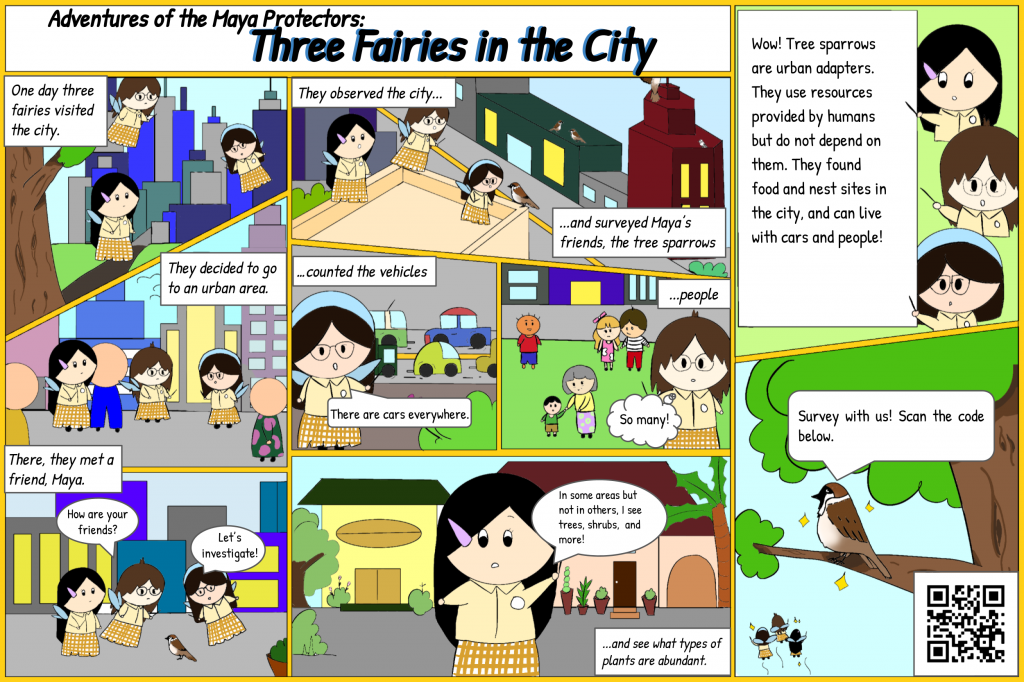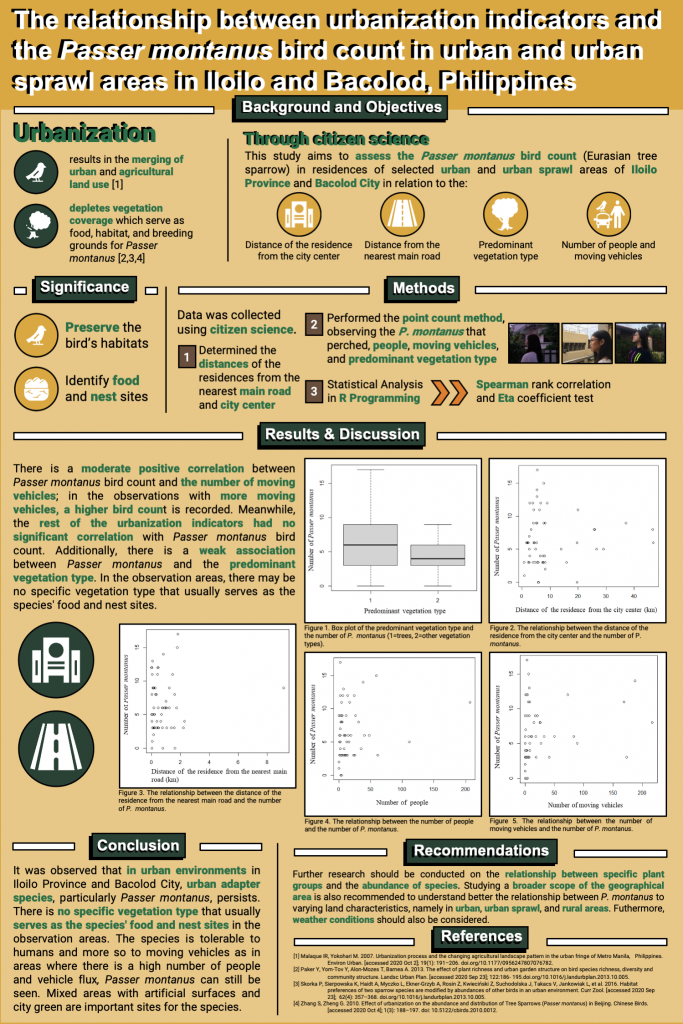The relationship between urbanization indicators and the Passer montanus bird count in urban and urban sprawl areas in Iloilo and Bacolod, Philippines
JOHANNA ALLIYAH MARIE Z. ROBLES, SIMONE ANNA GABRYELL G. SUMAGAYSAY, ERIN ROSE BENITA P. YOUNG, and ZENNIFER L. OBERIO
Philippine Science High School Western Visayas Campus – Department of Science and Technology (DOST-PSHS WVC), Brgy. Bito-on, Jaro, Iloilo City 5000, Philippines
Abstract
Urbanization leads to the depletion of vegetation that provides food, habitat, and breeding grounds for Passer montanus. Data was collected from Bacolod City and Iloilo, Philippines, using citizen science to assess the P. montanus bird count in relation to urbanization indicators. The distances of the participants’ residences from the city center and nearest main road were determined. Point count was performed while observing P. montanus that perched, people, moving vehicles, and predominant vegetation type seen during the observation period. Through R-4.1.2 Programming, the Eta coefficient test showed a weak association between P. montanus and the predominant vegetation type. The Spearman correlation indicated that the species and vehicles were moderately correlated while the rest of the data pairs had no significant correlation. In urban environments, urban adapters, P. montanus, persist. The species is tolerant of humans and moving vehicles and has no specific vegetation that serve as forage sites.
Keywords: bird survey, Passer montanus, urbanization, citizen science, urban adapter


